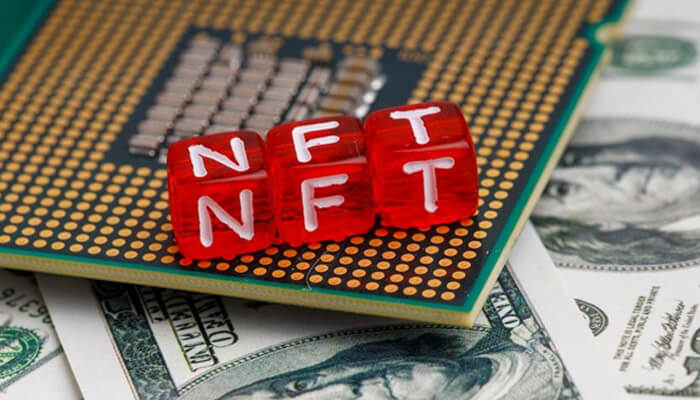Towards Distributed Consensus | Financial Express

By Srivatsa Krishna
Did people come for the technology and stay for the money? Or did they come for the money and stay for the technology? This is the chicken-and-egg question that is often asked about crypto. There is enormous confusion, myth, hype and uneasiness – all in equal measure – about the power, potential and risk of crypto and blockchain.
For the past many eons, software has been subordinate to hardware, which in turn has been subordinate to corporate management or organization. The entire blockchain revolution is based on the premise that software rules and hardware are subordinate to it. And this software runs based on a distributed consensus which is the core of blockchain technology. So there is not one person controlling the system that allows blockchain protocols to be written, run and enforced. Such broad community ownership and decentralized consensus, combined with true open access, is what drives the creation of the next generation Internet ecosystem.
It is often mistakenly believed that blockchains are just distributed ledgers and that Bitcoins are largely used for tax evasion or money laundering. However, blockchains, especially the modern ones like Ethereum, allow a code to compute on them; to call it just a distributed ledger is missing the forest for the trees. In a sense, blockchain is not only a protocol, but also an enforceable data code, guarded by millions.
Also read: the ‘good jobs’ challenge facing India
If you think about the evolution of the internet ecosystem, it was modular and each layer was clearly defined, unlike the computer ecosystem which was vertically integrated, like Apple or Microsoft. The power of blockchain rests on the fact that it is something like a Lego or a building block, where each piece of code leads to a large, open community that uses its genius to build on top, and the service itself is a reusable code, on which others can build.
What is astonishing and remarkable about blockchain as a technology is that it is ownerless and yet enforces ownership. It enforces all common notions of property rights, such as right to use, right to exclude, right to include, etc. for digital data, using smart contracts that are perpetual, autonomous algorithms.
Founded on blockchain are two broad movements, namely crypto and Web3. These are not technologies; they are communities and movements that make it possible to create applications that run on the blockchain. Blockchain, much like the technologies that preceded it, has an infrastructure layer and an application layer. What makes this fascinating is that both develop together on an open source basis – the genius of millions of individuals, unhindered by any organizational or even national boundaries, combine to create something that is available in the public domain for the genius of others to exploit and take forward. This is another unique feature of the blockchain where re-composable software is created for both the infrastructure and application layers, which allows the technology to work seamlessly.
Web1 was largely static, with websites providing information, and email was its killer application back then. Web2 was dynamic and interactive. One used Web2 to shop, socialize, travel, pay taxes, etc., but the ownership was with Big Tech firms who have milked our data for commercial purposes, even though they provide free and valuable services. Our data is fodder for them. Now comes Web3, where individuals not only control their own data and property rights around it, but can also get paid for it. So, for example, if Facebook uses your data—name, gender, address, interests, shopping record, etc.—and sends you microtargeted ads, they legally have to pay, say, 20-30% of what they make. from selling your personal information to other companies. Blockchain and Web3 will make this possible seamlessly and this will be a huge attraction that will entice more people to use Web3 apps.
When it comes to Bitcoin, this is one of the earliest applications of blockchain technology and is also a piece of code and applies to money. If you want to hire a graphic designer based in Croatia who can make amazing designs, but you have no way to pay him except to go through complicated routes and expensive fees for banks or intermediaries like PayPal, the best way is to do it on using Bitcoin. It is easy and convenient for several people to make peer-to-peer transactions without the need for a central legal authority. Of course, Bitcoin itself has a wallet that must first be loaded with your preferred currency.
Bitcoin is a cryptocurrency that can be used and stored in the immutable, non-reproducible ledger that tells everyone who paid whom, how much and when. There are thousands of other blockchains with varying levels of quality, flexibility, features and security. Bitcoin has reigned supreme because it has never been hacked so far and has been proof of concept for the world on the promise of blockchain.
In the process of performing such complex transactions, this blockchain-based application requires enormous energy for miners to create and validate code. However, September 15, 2022 is a landmark date – for the first time, Ethereum reduces its energy consumption by 99% through a new protocol called Merge. In Bitcoin, miners race to solve mathematical puzzles to verify transactions (called Proof-of-Work), while in Ethereum Merge these are replaced by Proof-of-Stake where “validators” deposit 32 ETH or around $50,000 to validate transactions . They are like guardians and get paid for it, as in the case of Bitcoin.
Proof-of-Stake makes Ethereum much more akin to a financial asset and could likely invite securities regulation. Whether the Merge will succeed or not will be clear in the coming weeks and months, but it is the first ever major upgrade to one of the two global operating systems in the crypto universe, with both pros and cons.
In conclusion, while there is still considerable unease surrounding crypto, particularly its economic core – Bitcoin and Ethereum – the underlying technology that powers it and Web3, namely blockchain, is here to stay. The Internet was created in October 1969, but it took three decades to become mainstream. Similarly, blockchain, crypto and Web3 entered our lives in 2008, but their terrifying promise to change the world will unfold in the decades ahead.
The author is an IAS officer
The views are personal
























